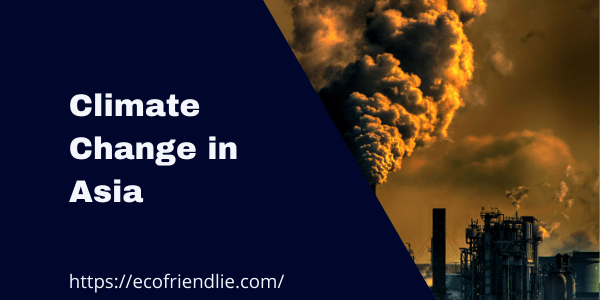Climate Change in Asia – Importance of Trees In our Life
In April, government and business leaders can pledge to take action on climate change on Earth Day.
We need to understand the importance of trees in our life, we’re all getting a little hot under the collar. According to the National Environment Change Secretariat, the annual mean temperature in Singapore climbed from 26.9 degrees Celsius to 28.0 degrees Celsius between 1980 and 2020, but the social and economic repercussions of a warming climate are much broader and extend far beyond our shores.
Climate change will be a topic of discussion during the World Economic Forum’s Special Annual Meeting 2021, which will be held in Singapore in August. This will be one of the first global leadership summits to address the problems of recovering from the Covid-19 pandemic while also setting the groundwork for a more inclusive and sustainable future. Policies that address the effects of climate change will be a critical component of any response.

Rising heat and humidity levels are some of the most dangerous of these effects. If left uncontrolled and unabated, this will have a negative influence on our bodies, as well as our livelihoods, infrastructure, and economy. Climate change adaptation and mitigation is a pressing issue in our time.
The scale of the impact of rising heat and humidity levels was recently revealed by McKinsey’s research. We show that the implications of a high-emission climate scenario are pervasive, affecting many portions of the globe.
Between 500 million and 700 million people in Pakistan, Bangladesh, and India might endure fatal heat waves on an annual basis of 20% by 2050. Chronic increases in heat and humidity in regions of India could result in the loss of up to 30% of annual daylight hours available for labor.
And these aren’t the only ones. Extreme heat and humidity will also diminish yearly outdoor working hours in Southeast Asia, and in China, the average proportion of outdoor working hours lost each year in exposed areas will nearly double from 4.5 percent in 2020 to 6.5 percent in 2030 and 8.5 percent in 2050. The effects of excessive heat are obvious throughout Australia, with the intensity of wildfires and droughts increasing.
In general, we find that Asia is more vulnerable than other parts of the world in many ways. By 2050, Asia, which accounts for more than two-thirds of global GDP, will be at risk of losing effective outdoor working hours due to increased heat and humidity. By 2050, up to 1.2 billion people might be living in locations with a non-zero yearly likelihood of lethal heatwaves, with the great majority in Asia, under a high emissions scenario.
Singapore, like other cities in the region, is affected not only by rising temperatures in general but also by the urban heat island effect. When we replace the natural cover with pavements and buildings, these absorb and retain heat, resulting in substantially greater temperatures in the city than in the surrounding countryside.
Big Cities
The urban heat island effect has been validated by a recent study in major Asian cities such as Bangkok and Jakarta. Rising urbanization in Asia is contributing to an increase in the size and number of urban heat islands. The nighttime temperature in some cities can be up to 7 degrees Celsius greater than in the surrounding areas.
Singapore has made it a strategic policy to mitigate the effects of heat since its inception. Air conditioning, according to former Prime Minister Lee Kuan Yew, was the most important technology of the twentieth century because it allowed employees in hot areas to be as productive as those in cooler climates. It’s time to think of new ways to keep cool.
City in Nature is the first pillar of Singapore’s Green Plan 2030, which was announced this year. It is a large-scale effort to reduce carbon emissions by planting one million trees and reserving 1,000 hectares of green space, 200 of which will be new nature parks.
Singapore may take a regional leader in climate adaptation infrastructure innovation by investing in climate mitigation initiatives through sustainable investment and sustainability funds, owing to its strengths as both an R&D and financial powerhouse. One example is Decarbonisation Partners, a new investment firm founded by Temasek and BlackRock this month.
While Asia is more vulnerable to physical climate risk than other parts of the world, it is also in a unique position to lead the response to these problems and seize any possibilities that may develop. In many places of Asia, adaptive thinking and mitigation design can be included in the infrastructure and urban areas that are currently being created.
The combination of technology, capital, and leadership serves as a paradigm for how we could collaborate to develop new approaches to adapting to, mitigating, and managing climate threats in our region and around the world. We can go from feeling the heat to defeating the heat by building on ongoing efforts and rallying support at meetings like the World Economic Forum.
Oliver Tonby is McKinsey’s Asia chairman and Mekala Krishnan, is a partner at the McKinsey Global Institute.
This article was originally published in The Business Times, Singapore, https://www.businesstimes.com.sg/
Trees Are Key To Fighting Heat
The importance of trees in our life of city dwellers, yet cities around the country are losing millions of trees each year. And many poor urban districts, which are often home to the city’s most vulnerable residents, are at a disadvantage from the outset.
If you reside in a city that is experiencing more extreme heat days, but you don’t have enough tree cover to keep your neighborhood cool, it can be a life or death situation. The people who are least likely to have air conditioning to cope with heatwaves, and who are most likely to have preexisting health issues that make them more vulnerable to heatwaves, aren’t benefiting from trees.
According to a study conducted by the Georgia Institute of Technology, Louisville is becoming hotter quicker than any of the other 50 largest U.S. urban regions when compared to the surrounding rural areas. Is this one of the reasons cities are hotter? There are fewer trees.
Development, natural catastrophes, illness, alien species, and a lack of tree maintenance are all contributing to the loss of 54,000 trees in Louisville each year. And it’s not the only one. According to the US Forest Service, 44 states lost tree cover in urban areas between 2009 and 2014, amounting to about 28.5 million trees per year.
Planting Trees Every 10 Meters Help Us Beat the Heat
According to a recent assessment by the UN’s Intergovernmental Panel on Climate Change (IPCC), extreme heatwaves that used to happen once every 50 years are now more likely to strike once every decade. This is confirmed by a study published in the Nature Climate Change magazine, which predicts that record-breaking heat events would occur seven times between now and 2050, and 21 times between 2051 and 2080.
Unless we take action, the world simply cannot (or will not) tolerate the heat anymore. However, as the expansion of renewables and other technologies that contribute to a sustainable future continues to accelerate, new research shows that we’ve been ignoring one of the most effective climate change solutions now available: trees.
In fact importance of trees in our life, a single healthy tree has the cooling capacity of ten air conditioners. Carbon dioxide is absorbed, floods are reduced, biodiversity is increased, air pollution is filtered, and public health is improved, to name a few advantages.
What if we imposed the same laws for trees and humans as ecologists advise a bee should never be more than 20 meters away from a plant? Imagine if we planted a tree every 10 meters and advised that no human should be more than that distance away from a shade tree. What would that look like and how would it feel?
Importance of Trees in our Life
It’s difficult to conceive how a plant or a tree – which stays somewhere for its whole life – might contribute to environmental balance and human health, but they do. Salutogenic design and exposure to nature have been shown in studies to help people heal and recover faster from disease, and eventually become healthier.
“Living within 100 meters of a tree can be enough to lessen the need for antidepressant drugs,” according to a recent German study. Participants who spent time in leafy environs felt less anxious and stressed, and their physiological stress indicator blood cortisol levels were lower. Trees have the ability to make us happy.
Trees can also make our cities safer to live in, according to a study. According to intriguing data from Baltimore, a ten percent increase in trees resulted in a 12% drop in crime. There was also a 14% decline in property crimes and a 15% decrease in violent crimes in another US state.
Imagine a world where cities and communities are safer, healthier, and happier. That would be invaluable.
Not all Trees are Created Equal
We’re all in the same boat when it comes to battling climate change, but we’re not all in the same boat. Unfortunately, equality is a concern even when it comes to trees.
When compared to wealthy villages, low-income neighborhoods frequently have fewer trees. This was confirmed by a National Public Radio investigation of 97 of the country’s most populous cities. The percentage of trees in low-income areas was significantly lower than in higher-income areas.
With the Suburb Improvement Program (SIP) as part of Greening Onkaparinga, the City of Onkaparinga, south of Adelaide, Australia, has taken on the problem of prioritizing regions of social and economic disadvantage for new street planting.
The approach offers a rigorous assessment of tree canopy cover, urban heat island mapping, and social vulnerability, and prioritizes tree planting renewal and replacement to help more disadvantaged individuals in their communities.
Over the last decade understanding the importance of trees in our life, the city has planted around 10,000 new trees, with plans to continue planting 1000 new street trees and improving streetscapes every year which is beneficial for an eco-friendly environment, encouraging more residents to walk through their suburbs.



